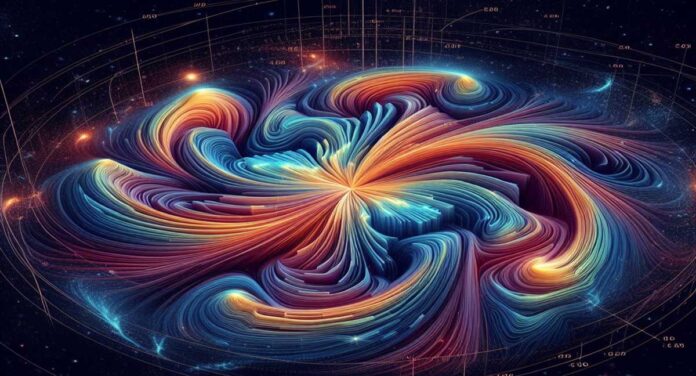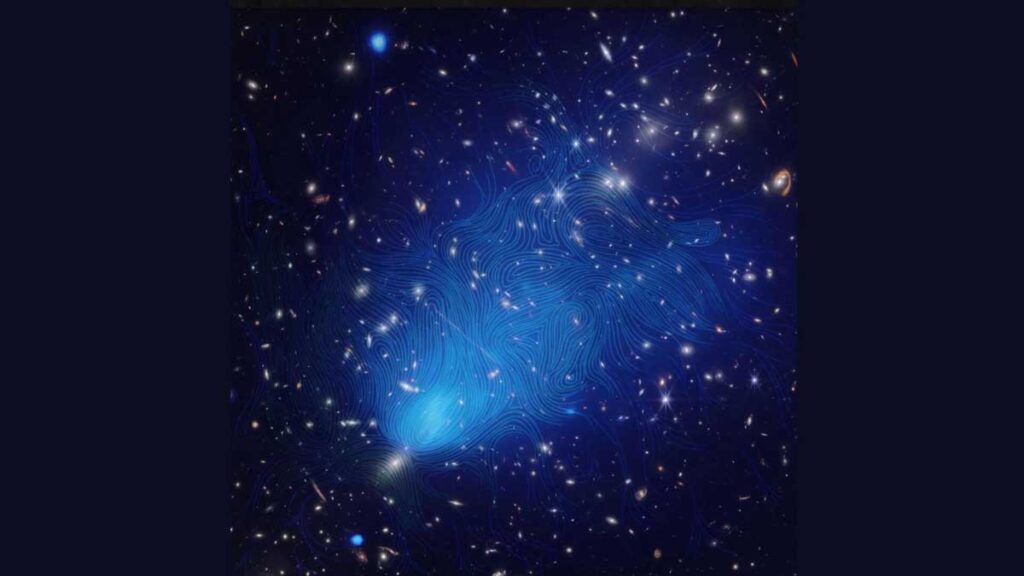Scientists have probed their way through the Milky Way and beyond to study magnetic fields in galaxy clusters, which are colossal conglomerations of galaxies, dark matter, and hot gas.
This new study lifts the veil over the mysterious magnetic fields that shroud these cosmic behemoths, challenging existing paradigms and opening new vistas for exploration.
Galaxy Clusters: The Cosmic Metropolises
These clusters, with their fascinating tapestry of magnetic fields, are like the bustling metropolises of our universe, captivating astronomers.
These invisible, gossamer threads tangled throughout the cosmos play a crucial role in shaping the destiny of galaxies and influencing the cosmic ballet of stars and gas.
Researchers have employed innovative techniques to map these elusive fields, offering glimpses into their enigmatic nature.
Introducing the Synchrotron Intensity Gradient (SIG) Method
The SIG method is a novel approach that promises to revolutionize our understanding of magnetic fields in galaxy clusters.
By using synchrotron radiation, scientists can peer into the heart of these cosmic giants, uncovering the hidden secrets of their magnetic domains.
Led by Professor Alex Lazarian at UW-Madison, this cutting-edge technique marks a paradigm shift in astrophysical research.
Mapping the Cosmic Matrix
Equipped with the SIG method, researchers have mapped the magnetic fields within galaxy clusters with unprecedented accuracy.
Through careful observations and intricate simulations, they’ve revealed the complex interplay of magnetic fields in these cosmic giants, highlighting their role in shaping the cosmic landscape.
From galaxy mergers to cosmic ray acceleration, magnetic fields emerge as silent orchestrators, guiding the cosmic symphony with invisible hands.
Overcoming Challenges: The Depolarization Dilemma
Traditionally, mapping magnetic fields in galaxy clusters has been hindered by depolarization.
However, the SIG method transcends these limitations, offering a clearer view of the magnetic landscape.
It has undergone rigorous testing and validation, heralding a new era for magnetic field exploration.
Unlocking Cosmic Mysteries
The SIG method could unlock a treasure trove of cosmic mysteries, from cosmic ray acceleration to heat conduction in the intracluster medium.
By delving into the core of galaxy clusters, scientists can unravel the universe’s secrets and understand the fundamental processes driving its evolution.
The future holds limitless possibilities as we gain a better understanding of the cosmos and devise new methods for its exploration.
The Road Ahead: Towards New Horizons
As we gaze beyond the cosmic tapestry, we’re reminded of the boundless wonders that exist just beyond our world.
With advances in technology, such as the Square Kilometre Array (SKA), the future of magnetic field mapping in galaxy clusters looks promising.
Let us continue our cosmic journey, marveling at the universe’s beauty and complexity, which holds the key to unlocking the mysteries of creation.
Conclusion
This study represents a significant development in our quest to unveil the mysteries of the universe.
By mapping magnetic fields in galaxy clusters with unparalleled precision, researchers have unveiled a cosmic tapestry far more beautiful and complex than imagined.
Standing on the threshold of a new age of discovery, the SIG method offers a new perspective into the cosmos, opening new avenues of exploration and expanding the horizons of human knowledge.
FAQ
The SIG method utilizes synchrotron radiation to map magnetic fields in galaxy clusters, allowing for the mapping of their intricate magnetic structure.
Unlike traditional techniques sensitive to depolarization, the SIG method is immune to depolarization, offering a clear view of the magnetic landscapes within galaxy clusters. This breakthrough has helped tackle longstanding challenges and deepen our understanding of cosmic mysteries.
The study offers unique insights into the role of magnetic fields in galaxy clusters, shedding light on their impact on cosmic processes such as galaxy formation, cosmic ray acceleration, and heat conduction. It enables scientists to gain a deeper understanding of these magnetic domains and unravel their mysteries.


